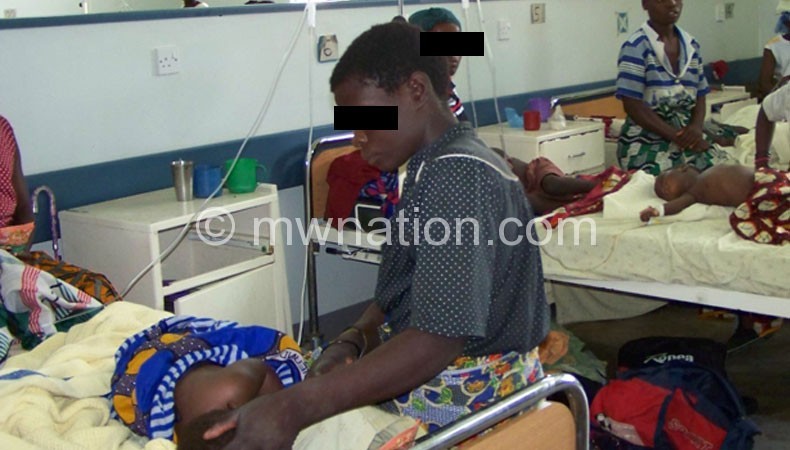Exclusive: Babies piled up at KCH
- As congestion overwhelms KCH
- We are just making too many children —Health Minister
Rapid population growth in Malawi’s capital, Lilongwe and the surrounding districts has turned Kamuzu Central Hospital into a death trap with up to five children in the emergency ward sharing a bed.

The hospital, which was built in 1977, was designed to cater for 500 admissions and 500 outpatients a day.
But the figures have almost trebled, with as many as 1 500 admissions and 1 500 outpatients.
A Weekend Nation walk through the facility showed that in the emergency ward five children with oxygen pipes inserted in their noses, brush shoulders on a single tiny bed.
Nightfall is a nightmare for the ward as trembling guardians take turns inspecting their children against tossing and turning.
A lapse in this exercise could result in children cutting each other’s oxygen supply.
One of the guardians, Marita Kachitenji, a referral from Ntcheu, describes the conditions at KCH as bizarre.
“The wards literally have no space to accommodate us. In one tiny bed you find three to five children sleeping. Our fear is that instead of getting cured, our children may end up contracting other diseases,” bemoaned Kachitenji.
In an interview, Malawi Health Equity Network executive director Martha Kwataine shared Kachitenji’s sentiments.
“It is a health hazard for several children to share one bed as they can infect each other as they would be suffering from different ailments,” said Kwataine.
The hospital director Dr Jonathan Ngoma acknowledged that the situation was abnormal, but they have no other option than to save the children’s life under these unusual circumstances.
“All in all, I think it is not normal. Everybody is supposed to have his bed but due to circumstances beyond our control, we have three or more.
“It is an issue that our space is not enough. If we had adequate space we could have had nothing of that sort. Basically, this tells us we need more wards and even that Lilongwe needs another big hospital to take care of this,” said Ngoma.
He further disclosed that they intend to extend the paediatric ward among other projects they want to embark on.
According to information in our possession, the monthly budget for the hospital is between K80 million and K100 million but since 2013, it has been receiving only K30 million to carter for both development and operations.
In an interview, Minister of Health Dr Jean Kalilani hinted that government plans to construct a new hospital in Lilongwe, but she said that might not automatically solve the congestion problem at KCH.
“We are doing our best to decongest the hospitals, but what is happening is that we are just making too many children and then the population is growing and there will be more patients going to the hospital. It is time we found means to stop this rapid growth of population,” said Kalilani.
Kwataine said the congestion at KCH would not be the case if it handled specialist treatment as it was designed to.
“Our health centres need to be upgraded and well equipped to handle such issues. Why should we have four doctors or clinicians in district hospitals? Some spend time in the office when their services can make a big difference at a health centre,” she said.
She suggested that government should consider upgrading health centres such as Kawale and Area 25 to rural hospital status, which could offer secondary level care like Caesarean section and other minor surgeries.
According to Kwataine, these hospitals can be managed by a team as is the case with district hospitals instead of leaving everything in the hands of a matron.
She also concurred with Kalilani’s observation about rapid population growth but she said government should have foreseen such a development and built a hospital with a bigger bed capacity.
At a press conference on Thursday in Lilongwe to explain the status of health sector reforms, Kalilani disclosed that other hospitals are facing similar problems but she was hopeful that the reforms which her ministry is implementing would address some of those challenges.
The reforms, she said, would see some functions of the ministry decentralised to hospitals and some health centres upgraded
Lilongwe had a population of about 100 000 when KCH was built in 1977 but latest statistics show that the population is now around 1 077 000.
Malawi’s current population growth rate is around three percent





